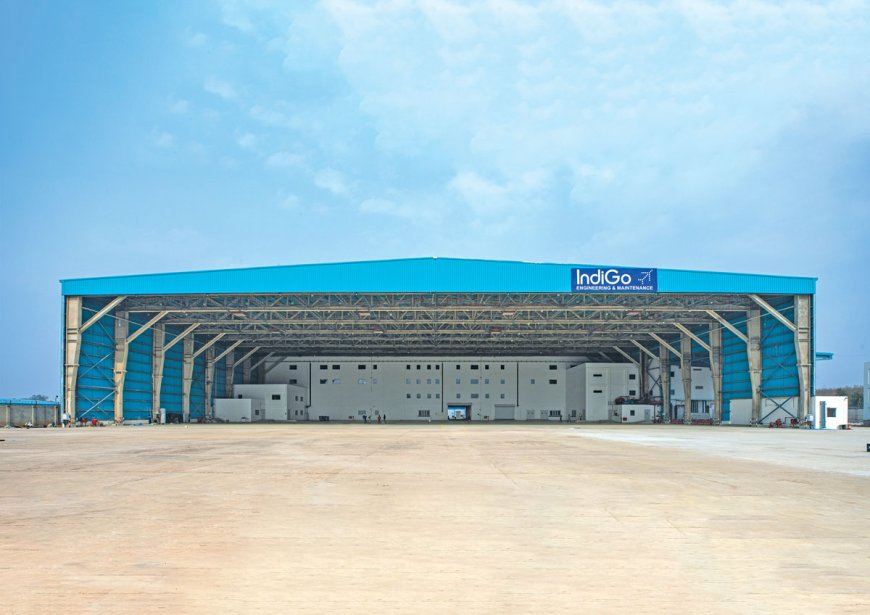A 93-meter clear SPAN HANGAR TRIUMPH

In the ever-evolving landscape of airport infrastructure, Everest has recently accomplished a groundbreaking feat with the execution of a commercial airplane hangar featuring an impressive 93-meter clear span. This monumental project, undertaken in one of India's leading metros, not only showcased Everest's engineering prowess but also introduced a revolutionary design concept to overcome space limitations imposed by authorities. Indigo, the end user and consultant, collaborated with Everest to navigate these challenges and bring innovation to the forefront of airport structure design.
Project brief
The project, entrusted to Everest by Indigo, encountered a unique set of challenges due to specific limitations on floor area imposed by authorities. Conventional methods, particularly the "fixed base" design, were deemed impractical within these constraints. Undeterred, Everest's design and engineering team collaborated closely with the consultant to find an alternative solution that would meet the stringent requirements.
Innovation & solution
Understanding the limitations of floor area usage, Everest's design team revisited the concept and successfully implemented the "pinned base" philosophy. Unlike the traditional fixed base design, where vertical columns transmit loads and moments directly to the base, the pinned base design absorbs and compensates moments at the joint between the column and rafter. This innovative approach allowed Everest to overcome spatial constraints without compromising structural integrity.
Challenges
Implementing a pinned base design posed its own set of challenges, including the need for heavier haunches and iterative designs. The use of kicker elements at the haunch, coupled with a deep understanding of the interplay between forces and member sensitivity, became crucial. Everest's ESBS design team demonstrated their expertise by navigating through these complexities, ensuring the hangar's safety and integrity were never compromised.
Outcome
The successful implementation of the pinned base design resulted in a remarkable reduction of the base plate area by nearly 70 percent, leading to an overall weight saving of 10 percent. Despite the challenges, the inside-to-inside and outside-to-outside dimensional limitations of the hangar were meticulously maintained. This project marks a historic moment as the first-ever application of a pinned base for a large clear-span building exceeding 90 meters, setting a new standard in airport structure design.
Conclusion
Everest's accomplishment in executing the 93-meter clear span hangar not only demonstrates their commitment to overcoming challenges but also paves the way for future innovations in airport infrastructure. The successful integration of the pinned base design not only met regulatory requirements but also heralds a new era in the construction of large clear-span buildings, positioning Everest as a trailblazer in the field of airport structures.







